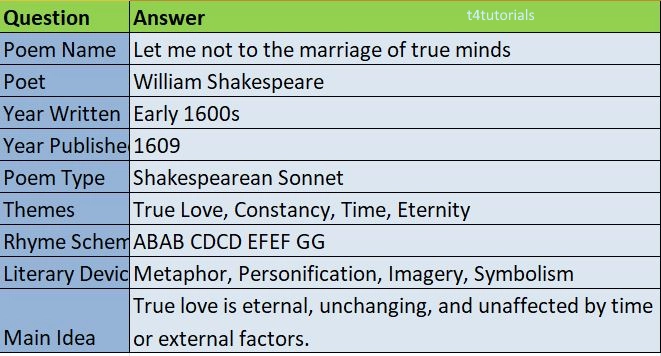Summary:
This poem, also known as Sonnet 116, is one of Shakespeare’s most famous reflections on love. The poet defines true love as unchanging and steadfast, unaffected by time, circumstances, or physical beauty. Love, he argues, is like a guiding star that remains constant even in difficult times. It is not subject to the whims of fortune or the passage of time. The poet concludes by affirming that if his definition of love is wrong, then no one has ever truly loved. The sonnet presents love as eternal and unshakable, making it a timeless meditation on the nature of genuine affection.

10
Score: 0
Attempted: 0/10
Subscribe
Score: 0
Attempted: 0/10
Subscribe
| Question | Answer |
| Poem Name | Let me not to the marriage of true minds |
| Poet | William Shakespeare |
| Year Written | Early 1600s |
| Year Published | 1609 |
| Poem Type | Shakespearean Sonnet |
| Themes | True Love, Constancy, Time, Eternity |
| Rhyme Scheme | ABAB CDCD EFEF GG |
| Literary Devices | Metaphor, Personification, Imagery, Symbolism |
| Main Idea | True love is eternal, unchanging, and unaffected by time or external factors. |